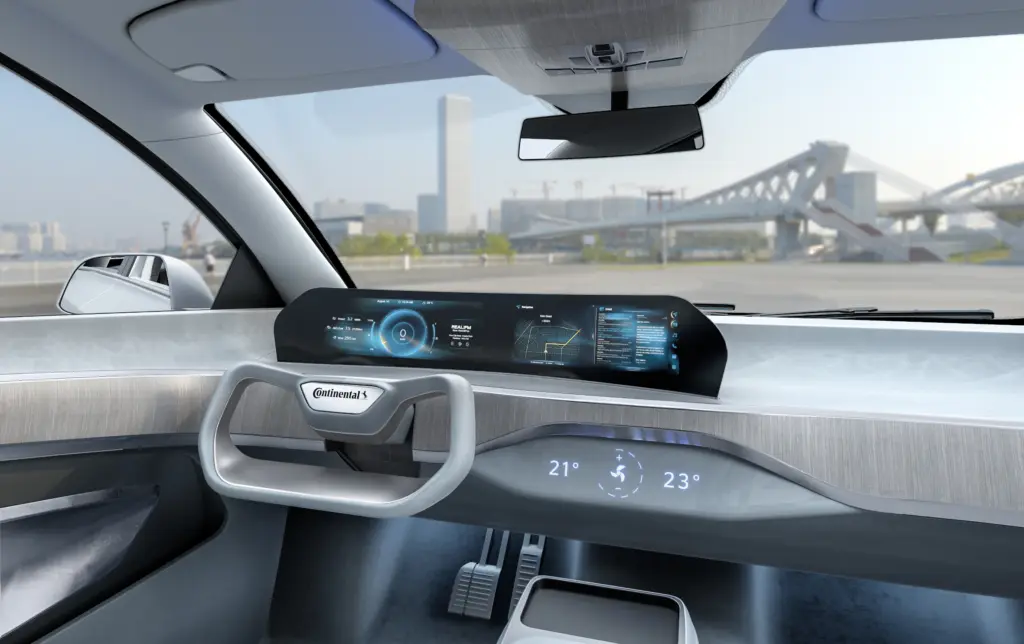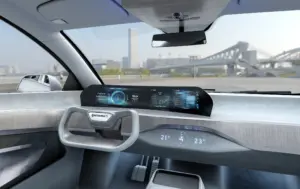IHS Markit forecasts a promising future for automotive display suppliers, with the market set to grow from a revenue of $11.6 billion in 2017 to over $21 billion by 2022. This growth is attributed to the rising demand for larger screens and an enhanced user experience in vehicle infotainment systems. Obviously, this is not all just about the expanding role of OLED displays, the emergence of heads-up displays (HUDs), even though the car cockpit is changing dramatically. We have covered some of these innovations in Jeep and Mercedes Benz.

A report in the Wall Street Journal reviewed how automakers are struggling to make profits on electric vehicles (EVs) due to expensive batteries and a lack of scale. To bridge the gap in profit margins, car companies are looking to digital revenue and subscription services as a solution. Offerings include music, entertainment, and navigation services, as well as subscriptions to in-car options like heated seats, increased horsepower, and improved handling. Autonomous driving subscriptions are also expected to be lucrative once the technology becomes mainstream.
Currently, digital services account for only about 5% of automotive revenues. However, as this percentage increases, the battle for control over the automotive dashboard is expected to intensify, with more automakers potentially deciding to reduce their reliance on smartphone platforms.
- Market worth estimate: $1.5 trillion by 2030
- GM’s revenue projection: between $20 to $25 billion from software-enabled services by 2030
- Stellantis’ forecast: roughly $22.5 billion by 2030
- Accenture’s prediction: digital services will make up 40% of global automotive revenues by 2040
GM Goes Proprietary With a Dash of Android
While some upgrades can be accessed through smartphones and computers, automakers aiming to sell directly through the dashboard will need to compete with Apple CarPlay and Android Auto. For years, these two platforms have provided consumers with a familiar and user-friendly interface for vehicle infotainment systems. However, as car dashboard screens become larger and tech companies reach deeper into vehicle functionality, automakers face the challenge of maintaining control over their own monetization efforts. As expected, Apple has said it plans for CarPlay to take over the entire dashboard, including the instrument cluster, and access various features that automakers are trying to monetize. As tech giants become more involved in the automotive space, they may interfere with traditional automakers’ attempts to establish direct relationships with customers and sell services through the dashboard.
In response to this competition, General Motors (GM) has decided to stop supporting Android Auto and Apple CarPlay on future EV models, opting to develop its own infotainment system instead, a move that was not appreciated by some of its customers on social media. According to the update GM sent out the press at the end of March, 2023, its new proprietary infotainment system will debut in select EV models launching this year and expand to future EVs in the coming years. Notably impacted models include the 2024 Chevrolet Blazer EV, 2024 Chevrolet Equinox EV, 2024 Cadillac Celestiq, and the 2025 GMC Sierra EV. Vehicles retaining Apple CarPlay and Android Auto functionality include the 2024 GMC Hummer EV Truck and SUV, 2024 Cadillac Lyriq, 2024 Chevrolet Silverado EV, and the 2024 Chevrolet Bolt EV and EUV. Internal combustion engine (ICE) vehicles are not currently affected by this decision.
Monetizing Eyeballs in Cars
It’s hard to tell how the best laid plans of automakers like GM will pan out. It has become almost a given that consumers are being asked to buy more and more basic products that are turned into platforms for subscription and add-on sales. The automotive display is going to be one such platform if everything goes according to the plan. That doesn’t sound like a great idea, but te that as it may, at least for display makers this is going to open up a lot of extra real estate in car interiors where every eyeball will have to be monetized. The numbers being projected are huge. The ideas are a little on the creepy side. The business practices are dubious. However, the dashboards and in-car infotainment systems are going to be beautiful.

